Tree Felling Size-Ups
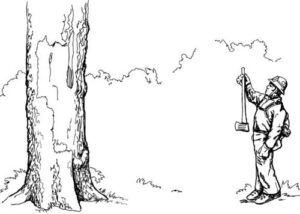
There are many reasons that a tree may need to be felled to support prescribed fire operations. Snags, or standing dead trees, are relatively flammable and can cast embers across your control lines once they are ignited. Some trees, including green ones, have the potential to act as ladder fuels, carrying surface fire into the forest canopy. Sometimes trees are growing too densely so the stand must be thinned by removing some of them.
Tree strikes are one of the leading causes of injury on the fireline, so careful consideration and planning should take place before the saw is even started. The US Forest Service developed a standardized size-up procedure comprised of five steps a sawyer should take before each tree to ensure that they understand the risks and make safe decisions to mitigate them. The procedure is known by the acronym “OHLEC” which stands for the main considerations of each step: Objectives, Hazards, Leans/Binds, Escape Routes, and Cutting Plan. Each of these is described below, and more details can be found in NWCG’s very informative resource, Standards for Wildland Fire Chainsaw Operations.
1. Objectives
Remind yourself what you are trying to achieve by felling this tree. Where does the tree need to land? When does the tree need to come down? Does the tree need to come down or is there a less-risky option? Answering questions like these will guide the rest of your size-up.
2. Hazards
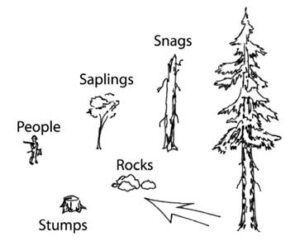
There are risky elements to every felling situation and they may be anywhere in the environment. Think about overhead hazards like widow-makers, characteristics of the tree like its size, dangerous elements in the cutting area like springpoles, values in the area that you want to protect like buildings, and the safety of any people in the cutting area including yourself.
3. Leans and Binds
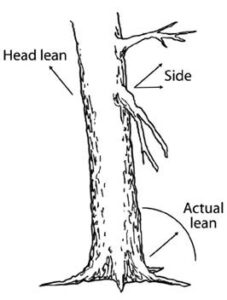
Determine the lean of your tree and any compression/tension forces that will affect the falling direction and your use of wedges.
4. Escape Routes
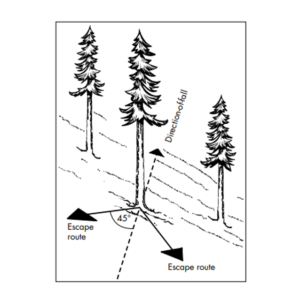
Make sure you have at least one (preferably two) paths that are free of debris, allowing you to quickly move away from the tree while cutting it.
5. Cutting Plan
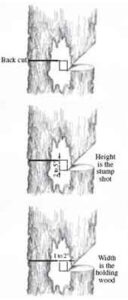
Know exactly what kind of cuts you are going to make and how you are going to make them. Play out the whole cutting plan in your head to help imagine any new risks that might pop up during the cutting.